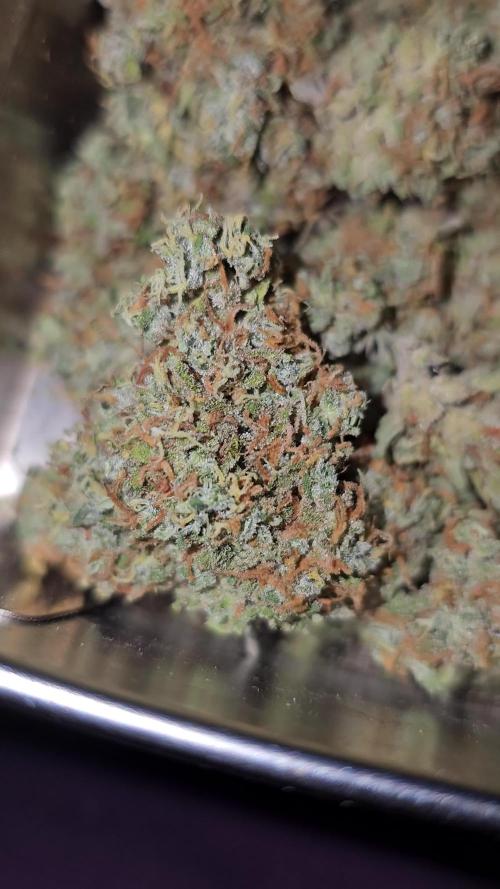The Grow Awards 2026 🏆 























Likes
7
Share


@DoctorP
Follow
Week 4 of veg (from clone) now looking well.
lights @ 100% brightness, always.
Likes
2
Share


@pareto
Follow
What a roller coaster of emotions. Was a litle early to harvest but since I also got some pollen thats totally fine!
Total Runtime: 88 days
Likes
8
Share


@PhilosoraptorX
Follow
The last week that they will receive 'veg' supplements.
Next feed will have bio bloom and top max added, root juice is removed.
I try to give them a feed with nutrients one or twice a week, and one without (just water).
Likes
3
Share


@Snuffys_garden
Follow
Week 8 is going great, started flush
toward the end of week 7 on Zkittlez and OG Kush. Also started flushing Pink Kush CBD and Purple Punch at start of week 8. All are packing weight still and smelling very fragrant. Trichomes are starting to cloud out and I am planning on harvesting when trichomes are starting to amber.
Likes
5
Share


@GarciasGarden
Follow
Day 9 plants looking great all green already seeing bud sites forming! Can’t wait to see the buds on these girls!
Again check out General hydroponics their nutrients are the best out there!
Likes
69
Share


@nonick123
Follow
Día 101 (09/09) Riego con 500 / 1000 ml H2O pH 6,5
Parece que se ha parado un poco el amarilleamiento que subía tan rápidamente por las plantas!
Día 102 (10/09) Riego con 500 / 1000 ml H2O pH 6,5
Excepto LemonPaya, todas las plantas empiezan a llenarse de tricomas! 😍
Día 103 (11/09) Riego con 500 / 1000 ml H2O pH 6,5
Estoy emparanoiado con que la floración va lenta...
Día 104 (12/09) Los cogollos no se están formado correctamente... Algo pasa... Los pistilos tienen un extraño color verde y no engordan...
OnionOG #1 es la única que tiene un ritmo normal...
Riego con 250 / 500 ml porque las temperaturas empiezan a bajar a 25 ºC diurnos / 22 ºC nocturnos y está bajando el consumo de agua...
Día 105 (13/09) La deficiencia empeora... Solo se salvan OnionOG #1 y KS1 #2...
Día 106 (14/09) La deficiencia sigue empeorando... Solo se salvan OnionOG #1 y KS1 #2...
Día 107 (15/09) La floración se ha ido al traste! (Excepto OnionOG #1 y KS1 #2)
Tras preguntar a Lurpe, GD e IG concluyo que el super soil tiene un bloqueo de nutrientes
Debido al bloqueo, se ha detenido la floración en 4 de las 6 plantas
Siguiendo las recomendaciones de Lurpe, hago flush hasta que el agua de escorrentía tiene una EC 2,5 (1250 PPMs)
A ver si les da tiempo a recuperarse...
💦Nutrients by Lurpe Solutions - www.lurpenaturalsolutions.com
🌱Substrate PRO-MIX HP BACILLUS + MYCORRHIZAE - www.pthorticulture.com/en/products/pro-mix-hp-biostimulant-plus-mycorrhizae
Likes
7
Share


@OwlGang_Uk
Follow
Week 5 - Trimming And Low Stress Training - the Gorilla Glues are looking nice and healthy. I trimmed and LST 1 of the Gorilla Glue’s and just trimmed the other one for experimental purposes.
Likes
6
Share


@TheMayor4434
Follow
Start of week six we start seeing rapid growth from all plants in height and bud production. 1 of the ladies is an absolute freak but in all the good ways. Shes reaching a meter in length and is going to have 5 slender long kolers. The rest are all around the 80cm mark minus the two under achievers which are at the 70 cm mark which is amazing as the plants are supposed to be the size at harvest. Not changed much apart from excluding the voodoo juice nutrients ,adding another 600w light to the tent and a tiny bit of defoliation. My flat is starting to smell amazing. Sometimes I bury my nose in the outlet pipe and inhale a deep breath. Haaaah
Likes
Comments
Share


@Dabking
Follow
chopped on day 79 (week 11.3) drying now. will post harvest weight after drying
Likes
32
Share


@GreenHouseLab
Follow
This girls is extremely bushy, absolutely lost cause lol I have no doubts in flower she will start stretching. Increased watering at 1.8L every 24hrs.
Likes
8
Share


@Lukeskywalker
Follow
Nice growing, the yield to time ratio is weaker than in the case of automatic strains, maybe it is also due to some stressful factors. but the power is huuuge. Sticky fingers ☀️😉😄 thanks to all teachers
Likes
6
Share


@m0use
Follow
This was a sad little plant, if only the fucking birds did not eat the original plant. They are so bloody annoying.
Over all plant did ok, just the runt size is a massive let down.
Will just dry this and give it to a friend to smoke. This had a twin in terms of being a runt and that was with Rainbow Candy XL, and a few Dinamed seeds as well I found in the garden.
@GanjaFarmerSeeds, If you like the images or videos I can send you raw files that have not been shrunk and contain no watermarks, if you feel I am in the top 3 of your BDOTY Contest that is :D


































